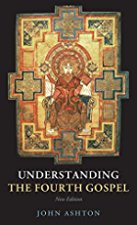 The Gospel of John is notorious for its several awkward transitions and these have led a number of scholars to argue that the present Gospel we know is quite different from what must have been its first edition. A recent discussion led to the question of what scholarly publications there are on the original version of the Gospel of John. That sent me back scrambling to dig out what I was sure I must have read a few years ago in a work commended as a must-read to anyone interested in serious studies of the Gospel of John.
The Gospel of John is notorious for its several awkward transitions and these have led a number of scholars to argue that the present Gospel we know is quite different from what must have been its first edition. A recent discussion led to the question of what scholarly publications there are on the original version of the Gospel of John. That sent me back scrambling to dig out what I was sure I must have read a few years ago in a work commended as a must-read to anyone interested in serious studies of the Gospel of John.
A leading scholar on the Gospel of John, John Ashton, has proposed the passages I list below were not part of the original work. Ashton is not suggesting that a later edition had a different author — at least not in its entirety. The stylistic argument indicates that in several instances the same author returned at a later date and under different circumstances to his work to add additional material.
Most interesting is the proposal that the “Cleansing of the Temple” scene was originally in the same place as it is found in the Gospel of Mark — just prior to the Passion of Jesus — and that it was later moved to its present location (chapter 2) to make way for the later addition of the Raising of Lazarus.
At the end of the list of passages that did not belong to the author’s original draft I set out a scholarly reconstruction of the sequence from chapter 10 on. A future post will hopefully complete what I begin here. (Quotations are from John Ashton’s Understanding the Fourth Gospel.)
Continue reading “The First Edition of the Gospel of John (1)”
